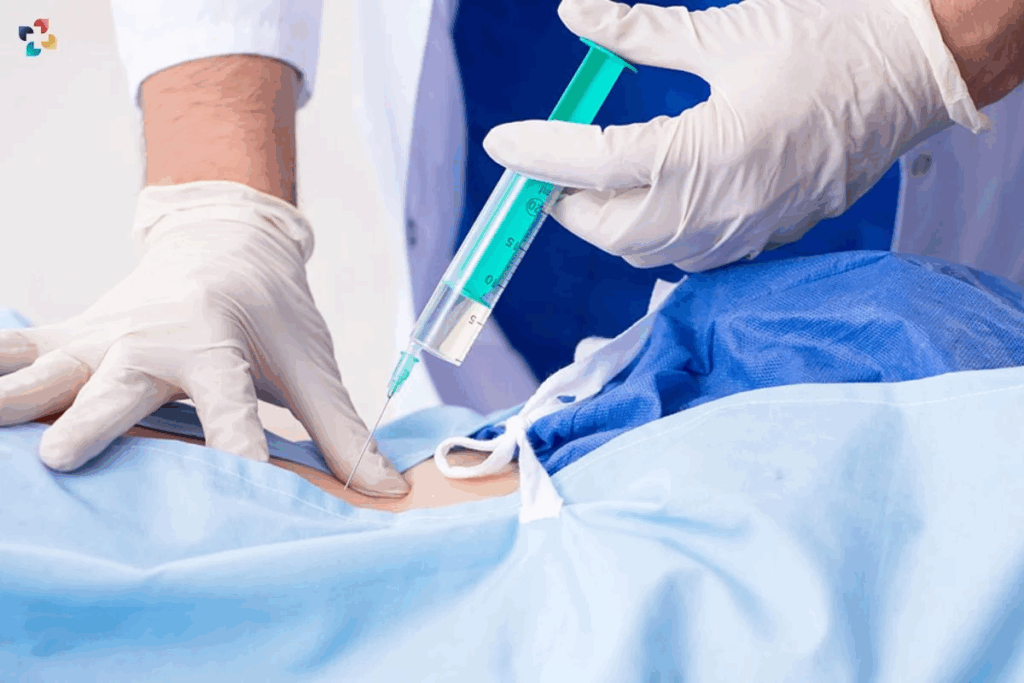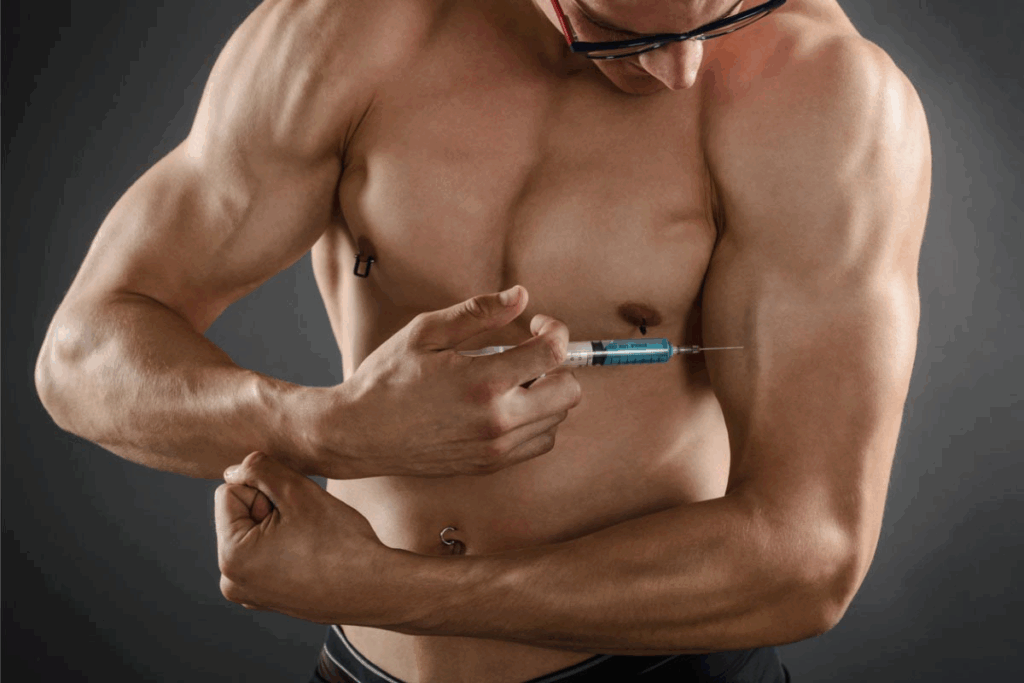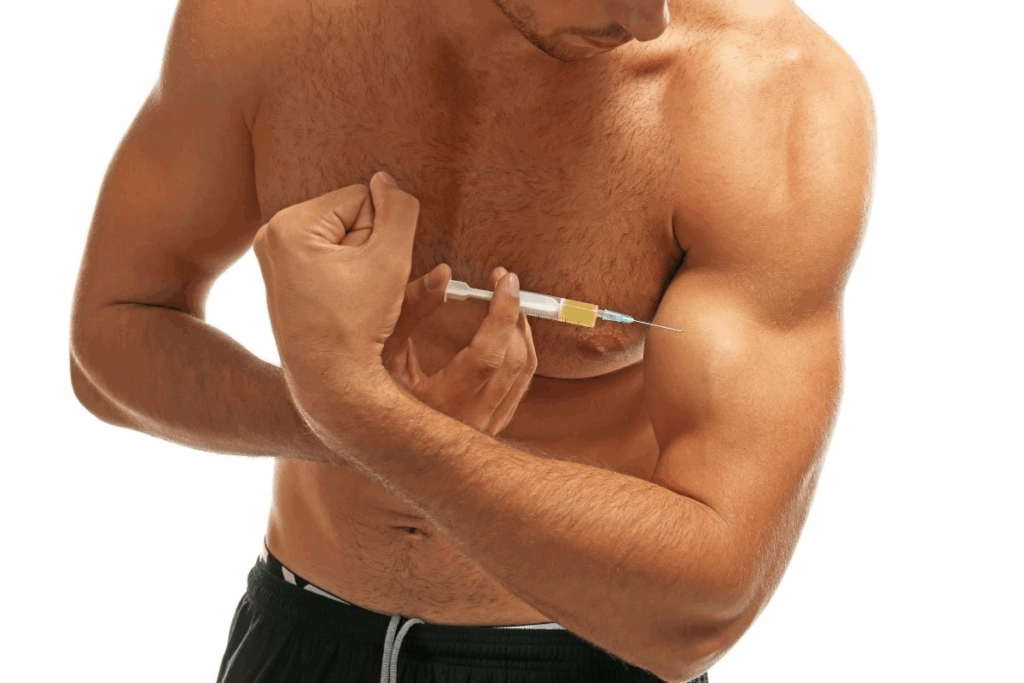Last Updated on October 23, 2025 by mcelik

Steroid injections, like cortisone shots, are used to reduce pain and swelling. At Liv Hospital, we focus on your safety and making sure you know what to expect. This helps you feel better during your recovery.
While safe for most, steroid injections can lead to different reactions. Some are mild, while others are more serious. It’s important to know what to expect and when to get help. We’ll cover the 9 most common reactions and what to watch for.
Knowing the side effects of cortisone shots helps you manage your treatment better. Our aim is to support you fully during your care.

Steroid injections, like cortisone shots, are key in medicine. They help treat many inflammatory conditions. Doctors use them to manage pain and swelling in muscles and joints.
There are many steroid injections used in medicine. Cortisone is one of the most common. Cortisone shots are very effective in reducing swelling and pain in joints and soft tissues.
Other injections include triamcinolone, methylprednisolone, and betamethasone. Each is used for different conditions. The right injection depends on the condition, its severity, and the patient’s health history.
Steroid shots are used for many conditions. They are often used for osteoarthritis, tendonitis, and bursitis. They help reduce pain and swelling in joints and soft tissues.
They are also used for rheumatoid arthritis, some tendinopathies, and soft tissue inflammation. Steroid shots are a valuable treatment for many patients.

When steroid medications are injected into the body, they reduce inflammation. This is key in managing pain and swelling in various conditions.
Steroid injections contain corticosteroids, which mimic hormones from the adrenal gland. These hormones calm the immune system’s inflammation response. This leads to less swelling and pain in the treated area.
The anti-inflammatory effect works by stopping the body’s chemicals that cause inflammation, like prostaglandins.
The effects of steroid injections vary by body area and condition. For example, joint injections can offer relief for weeks to months. Soft tissue injections might have a shorter effect.
The duration of effects can range from weeks to months. Several factors affect this, including the steroid type, injection location, and individual response.
It’s important to know the difference between normal and concerning reactions after a steroid injection. Patients may feel a range of effects after getting a steroid shot. Some are normal and go away quickly, while others need medical help.
After a steroid shot, you might feel pain, swelling, or redness at the spot where you got the shot. These feelings are usually mild and go away in a few days. Doctors say it’s common to feel some discomfort after a shot.
“Most patients feel some pain or discomfort after a steroid injection,” a doctor explains. “This usually goes away in 48 to 72 hours.”
Here’s what you might expect after a steroid injection:
| Reaction | Typical Timeframe | What to Do |
| Pain at the injection site | 0-3 days | Apply ice, take pain relievers as directed |
| Swelling or redness | 0-3 days | Monitor, apply ice if necessary |
While most reactions are okay, there are times to call your doctor. Severe pain, signs of infection, or an allergic reaction to a cortisone injection are serious and need medical help.
If you have any of these serious reactions, get medical help right away. Your doctor can check you out and tell you what to do next.
Cortisone shots are usually safe but can cause pain and swelling. This is called a post-injection flare. Knowing about it helps manage expectations and care.
Pain and swelling after a shot can happen for a few reasons. The shot itself can irritate the area. The cortisone can also cause inflammation before it starts to reduce it. Knowing this reaction is usually short-lived can ease worries.
The body’s reaction to the shot can also cause pain and swelling. As the cortisone works, these symptoms usually go away. But it’s important to watch how you feel and see a doctor if things get worse or don’t get better.
There are ways to manage pain after a shot. Applying ice to the area can help with swelling and pain. Over-the-counter pain meds, if okay’d by a doctor, can also help.
If the pain is too much, a doctor might give stronger meds or suggest other treatments. Always follow their advice and tell them about any symptom changes.
Understanding why post-injection flare happens and using good pain management can help. This way, patients can deal with the temporary discomfort of cortisone shots and focus on getting better.
Allergic reactions to cortisone injections are rare but serious. These injections are used to reduce inflammation and pain. It’s important to know about the risk of an allergic response.
Mild to moderate allergic reactions show up in different ways. You might see redness, swelling, or itching where the injection was given. Some people get a rash or hives. Most of the time, these reactions are not dangerous and can be treated.
Keep an eye on the injection site after getting the shot. Tell your doctor if you notice anything strange. They can help with antihistamines or creams to make you feel better.
Severe allergic reactions to cortisone injections are rare but can be deadly. Anaphylaxis is a serious condition that needs quick medical help. Signs include trouble breathing, a fast heartbeat, dizziness, and low blood pressure.
It’s key to know the signs of anaphylaxis. If you have these symptoms after a shot, call for emergency help right away. Getting epinephrine quickly is vital to avoid serious problems.
Knowing about allergic reactions to cortisone injections helps patients take charge of their health. Being aware of symptoms and how to react can reduce risks. This ensures the best results from treatment.
Cortisone injections can help with joint and tissue inflammation. But some people might feel sick afterward, with nausea and digestive problems. It’s important to know why this happens and how to handle it.
Cortisone injections can make some people feel nauseous. The steroid can upset the body’s hormonal balance, irritating the stomach. The injection itself might also cause stress or anxiety, leading to queasiness.
The exact mechanism is not fully understood. But, it’s thought that cortisone’s systemic absorption affects the gut. Some people might be more prone to these effects because of how their bodies process steroids.
If you’re feeling nauseous or have digestive issues after a cortisone shot, there are ways to feel better. Staying hydrated is key, so drink lots of water. Try to eat small, frequent meals to help digestion. Avoid heavy or spicy foods that can upset your stomach.
Your doctor might suggest over-the-counter anti-nausea meds. But always check with your doctor before starting any new meds, even if you’re already on others.
To reduce digestive problems, your doctor might advise on when to take the injection. They might also suggest taking it with stomach-protecting meds. Always follow their advice and report any ongoing or severe symptoms to ensure your comfort and safety.
Steroid injections help reduce inflammation but can affect energy and sleep. It’s important to remember that everyone reacts differently.
Fatigue is a common side effect of steroid shots. It can make you feel very tired, even if you’re usually full of energy. Many patients say they feel much less energetic after getting a shot.
Resting well after a shot and watching your energy levels is key. If you’re feeling very tired or it doesn’t go away, talk to your doctor.
Some people might feel the opposite of tiredness – they can’t sleep well. This can really affect how you feel and recover. Steroid shots can mess with your body’s natural sleep cycle.
To manage sleep issues, try these tips:
If sleep problems keep bothering you, talk to your doctor. They can offer more help and advice.
In summary, steroid shots can change how you feel and sleep. Some might feel tired, while others might have trouble sleeping. Knowing about these effects and how to handle them can help a lot with your recovery.
Steroid injections are a common treatment for many inflammatory conditions. They are generally safe but can cause side effects like skin changes. Patients might notice rashes or excessive sweating after getting a steroid injection. We will look into these skin-related side effects and offer tips on how to manage them.
A steroid shot rash is a possible reaction to the injection. This rash can show up as redness, itching, or small bumps around the injection site. Some people might also see skin discoloration, which can be temporary or, less often, permanent. It’s essential to monitor the injection site closely and report any concerning changes to your healthcare provider.
Some people may sweat more after a steroid injection. This side effect is usually temporary and goes away on its own. To manage excessive sweating, you can keep good hygiene, wear breathable clothes, and use antiperspirants. If the sweating is severe or lasts a long time, consulting with your healthcare provider is a good idea.
Cortisone injections help reduce inflammation but can cause headaches and feeling unwell. These effects are usually short-lived but can worry those who experience them.
Systemic reactions happen because cortisone injections affect the whole body, not just the injection site. The body’s processes can change, leading to feeling unwell or tired.
Some people might be more likely to have these reactions. This could be because of their health, how sensitive they are to corticosteroids, or other reasons. It’s important to know these reactions are usually temporary and not a long-term worry.
There are ways to handle headaches after cortisone shots. Over-the-counter pain relievers can help. Drinking water and resting well are also good ideas.
If headaches don’t go away or are very bad, see your doctor for advice.
Corticosteroids can also change how much you want to eat and your mood. Some might eat more, which can be managed with healthy food choices. Mood swings, from feeling too happy to being irritable, can happen but usually go away on their own.
“Corticosteroids can affect mood and appetite, but these effects are generally temporary.”
Medical Expert
Eating well and talking to your doctor can help deal with these side effects.
Getting a cortisone shot in the foot can really help with pain. But it’s key to know about possible side effects and what recovery is like. These shots are often used for foot issues like plantar fasciitis and arthritis.
Cortisone shots in the foot can cause some side effects. Some are mild and short-lived, while others might be more serious. Common issues include:
Watching for these side effects and talking to your doctor if they don’t go away or get worse is important.
The time it takes to recover from a cortisone shot in the foot varies. Most people start to feel better in a few days to a week. But it’s important to take it easy and let your foot heal.
Here’s a basic guide for recovery:
Knowing about side effects and following the recovery plan can help you get the most out of your cortisone shot. It also helps avoid any big problems.
It’s important to know the serious side effects of steroid injections. These injections help with many inflammatory conditions. But there are risks that patients need to be aware of.
Steroid injections can cause tendon rupture, a serious issue. This can happen from the injection or the condition being treated. Following post-injection care is key to reducing this risk.
“The risk of tendon rupture is serious,” doctors say. It needs quick medical help and can cause lasting harm if not treated right away.
Infection is another big risk after steroid injections. Look for signs like redness, swelling, warmth, or pus at the site. Also, watch for fever or chills. Using proper sterile technique is vital to lower infection risk.
Getting steroid injections more than once can cause lasting damage. This includes weakened or atrophied tendons and skin changes like thinning or color loss. Think about these long-term effects when choosing treatment.
“The long-term risks of steroid injections must be weighed against their benefits, mainly in young patients or those needing many injections,” a leading medical expert says.
Knowing these serious complications helps patients make better choices. They can work with their doctors to lower risks.
Steroid injections are a valuable treatment for many inflammatory conditions. They help reduce pain and inflammation. We’ve looked at the common reactions, serious complications, and benefits of these injections. This helps patients make better choices about their treatment.
When thinking about steroid injections, it’s key to look at both sides. The good things include less inflammation and pain relief, which can greatly improve life quality. But, there are also possible reactions like post-injection flare, allergic reactions, and systemic effects to watch out for.
Understanding the risks and benefits helps patients talk better with their doctors. It’s also important to follow the care instructions after the injection. This helps avoid risks and makes the most of the benefits of steroid injections.
In short, steroid injections can be a good choice if used wisely. We urge patients to think carefully about their situation. They should weigh the benefits against the possible reactions to make a smart decision about their care.
Common reactions include post-injection flare, allergic reactions, and nausea. Fatigue, skin changes, and headaches are also common. These reactions can vary in severity.
Yes, cortisone shots can cause allergic reactions. These can range from mild to severe. In severe cases, anaphylaxis can occur, which is life-threatening and needs immediate medical help.
Feeling sick after a cortisone injection is often due to nausea and digestive issues. It’s important to manage these symptoms for comfort.
Steroid shots can make you feel tired. Some people might have trouble sleeping. The effects on energy and sleep can vary.
Skin changes can include rashes, discoloration, and excessive sweating. It’s important to understand these changes and how to manage them.
Yes, cortisone injections can cause pain after the shot. In the foot, specific side effects need careful consideration. Understanding the recovery timeline and activity modifications is key.
Serious complications include tendon rupture, infection, and long-term effects from multiple injections. It’s important to monitor and understand these risks.
The effects last vary by the body area and condition treated. Relief can last weeks to months.
Yes, they can cause systemic reactions like headaches, malaise, increased appetite, and mood changes. These are usually temporary but need management.
To manage pain, understand the post-injection flare, and use effective strategies. Rest, ice, compression, elevation, and medication can help.
Ciriaco, M. (2013). Corticosteroid-related central nervous system side effects. PMC, 3853679.
https://www.ncbi.nlm.nih.gov/pmc/articles/PMC3853679
Subscribe to our e-newsletter to stay informed about the latest innovations in the world of health and exclusive offers!
WhatsApp us